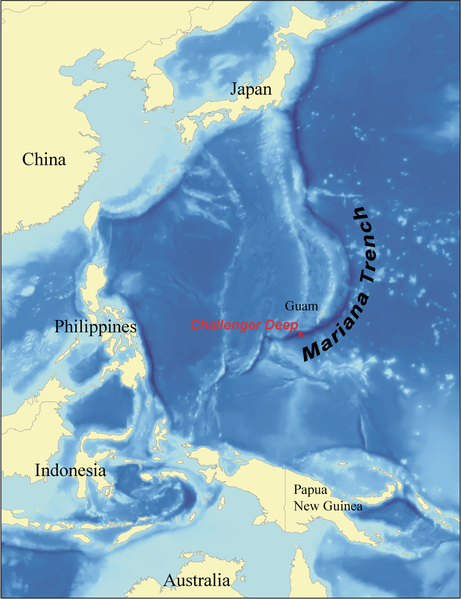Science News
Diving Deep For Science

James Cameron doesn’t do anything on a small scale. Take his foray into marine science. Not only did he dive into the deepest place on Earth—the Mariana Trench—he dove deeper than anyone ever has before. And presenting his findings from that dive at this week’s American Geophysical Union (AGU) Meeting, he suggests that he also might have found the origins of life.
Oh, is that all?
Cameron is not a scientist, but a proponent of science, as he described at a press conference yesterday. (And scientists need more people like him on their side!) In this role, he hopes to bring science into the popular dialogue and provide tools to scientists—whether that’s funding (through different sources including his Blue Planet Marine Research foundation) or engineering (such as his Deepsea Challenger submersible).
This past March, Cameron and a team of scientists headed to the Mariana Trench in the Pacific Ocean. Using his submersible as well as two unmanned landers, Cameron gradually dove deeper and deeper into the Mariana Trench, collecting samples and video for scientists.
At the AGU meeting, researchers described their findings at these depths and locations. Kevin Hand, an astrobiologist with NASA’s Jet Propulsion Laboratory, spoke of microbial mats and the serpentinization that he witnessed. Doug Bartlett, a microbiologist from Scripps Institution of Oceanography at UC San Diego, discussed not only the many novel microbes discovered, but also the larger organisms found at some of these depths, including crustaceans, worms, corals and anemones. Patricia Fryer, a geologist from the University of Hawaii, described the tectonic plates, subduction zone and topography at that location.
Together, the findings describe a rich and unique ecosystem. With no other resources to feed the microbes, the researchers propose that the serpentinization on the overriding subduction plate is the energy source for microbes and microbial mats at those depths. Those microbes in turn feed the larger animals seen in the area.
Cameron and the scientists go a step further, suggesting that the serpentinization’s match of geochemistry and biochemistry could be how life began on this planet. And what’s more, this could be how life works in other water bodies in our Solar System and beyond. Cameron named the moons Enceladus, Europa and Callisto as potentially harboring these processes.
We have much to learn about this unusual spot on our planet, 35,630 feet below sea level, and Cameron’s quest is a boon for marine science. Even though the proposed theories about the origin of life seem a bit premature, just focusing on the “unexplored frontiers right here on Earth,” in Cameron’s words, is enough. Isn’t it?
Image: Kmusser/Wikipedia using NOAA data